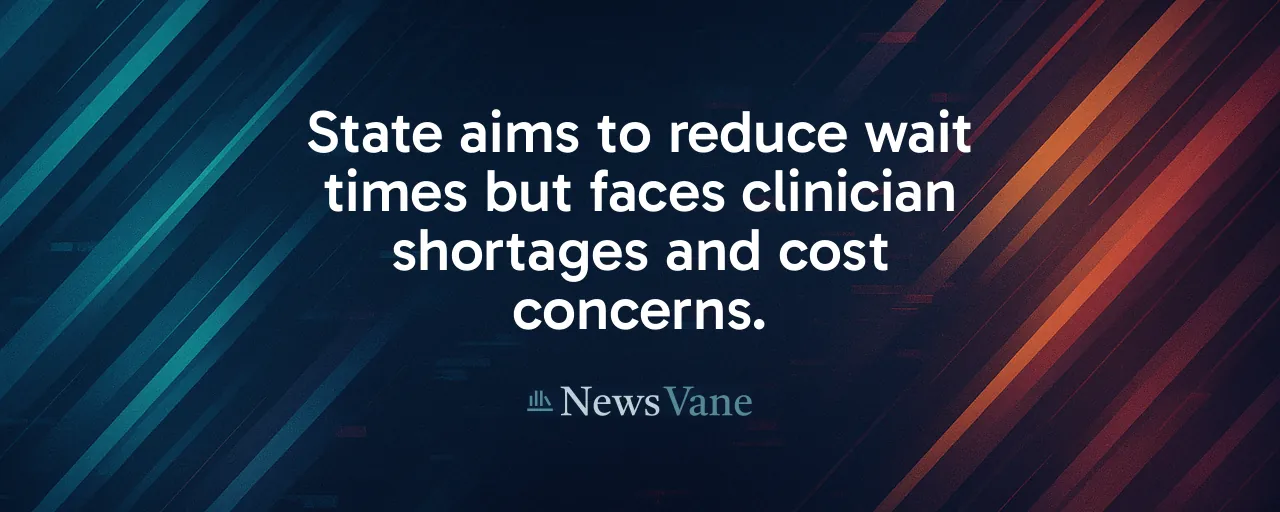A Bold Step for Mental Health Access
New York State has rolled out groundbreaking regulations to tackle a persistent problem: getting timely mental health care. Announced on July 8, 2025, by Governor Kathy Hochul, the rules require health plans to offer an initial outpatient appointment for behavioral health within 10 business days of a request. This move targets the frustration of long wait times and unreliable provider lists, issues that have left many New Yorkers struggling to access care for mental health or substance use disorders.
The regulations don't stop at wait times. Health plans are now required to maintain accurate, up-to-date directories of in-network providers, listing details like location, telehealth options, and languages spoken. These measures aim to eliminate 'ghost networks': deceptive lists of providers who aren't actually available. For patients, this could mean less time navigating dead ends and more time getting help.
Why the Change Matters
Access to timely mental health care is critical. Research shows that shorter wait times lead to better treatment adherence and fewer emergency room visits. Nationwide, 112 million Americans live in areas with too few mental health professionals, and New York is no exception. Long delays can worsen conditions, increase relapse rates, and, in severe cases, contribute to suicides or overdoses.
The new rules apply to Medicaid Managed Care, Child Health Plus, and the Essential Plan starting July 1, 2025, with commercial plans phasing in as policies renew. Insurers are also required to provide out-of-network care at in-network rates if they cannot meet the 10-day standard, a protection designed to ensure patients are not left paying out-of-pocket or forgoing treatment.
The Mechanics of Reform
Beyond wait times, the regulations demand transparency. Health plans are required to post detailed provider directories online and provide lists of available providers within three days of a patient's request. Dedicated staff will help members find in-network care, and consumers can file complaints if plans fall short. These steps aim to rebuild trust in a system where studies have found over half of provider directories contain inaccurate information.
New York's approach builds on a $1 billion mental health agenda, including funding for the 988 Suicide & Crisis Lifeline and increased oversight of insurers. The state has also secured $1 million in the 2026 budget to enforce these rules, support compliance, and handle complaints, signaling a commitment to making the reforms stick.
Challenges on the Horizon
While the regulations are ambitious, they face hurdles. New York's shortage of behavioral health providers could strain the system, especially in rural areas where clinicians are scarce. Without more professionals, the 10-day standard might push insurers to rely on out-of-network referrals, potentially raising costs. Peer-reviewed studies warn that increased demand without workforce growth could overwhelm providers.
Cost is another concern. New York's insurance premiums are already among the nation's highest, and some worry that compliance costs could lead to higher rates for employers and consumers. Insurers may also face challenges integrating real-time scheduling data to keep directories accurate, a technical hurdle that requires significant investment.
Balancing Access and Affordability
The regulations reflect a broader push for equity in mental health care, building on federal parity laws from 1996 and 2008 that required equal coverage for mental and physical health. Those laws often lacked enforcement, leaving gaps that New York's rules aim to fill. The state's focus on transparency and accountability could set a model for others, but success hinges on execution.
Potential compromises could ease tensions. For instance, pairing the rules with incentives to attract more clinicians, such as loan forgiveness or relaxed scope-of-practice laws, might address shortages. Shared investments in centralized directory technology could reduce costs for insurers while ensuring accuracy. Regular public reports on wait times could also allow adjustments without scrapping the reforms.
What's at Stake for New Yorkers
For patients and families, the stakes are high. Faster access to care could reduce suicides, overdoses, and hospitalizations, easing the burden on caregivers and communities. Transparent directories might restore confidence in insurance, while telehealth options could help bridge gaps in rural areas. If implemented well, the rules could transform how New Yorkers experience behavioral health care.
The reforms face limitations. Workforce shortages, cost pressures, and enforcement challenges loom large. The state's ability to balance these factors will determine whether the regulations deliver on their promise or become another well-intentioned but underfunded mandate.
As New York pioneers this approach, other states are watching. The outcome could shape national conversations about mental health access, proving whether bold regulations can deliver care when it's needed most. For now, New Yorkers await the real-world impact of a policy that's as promising as it is complex.
